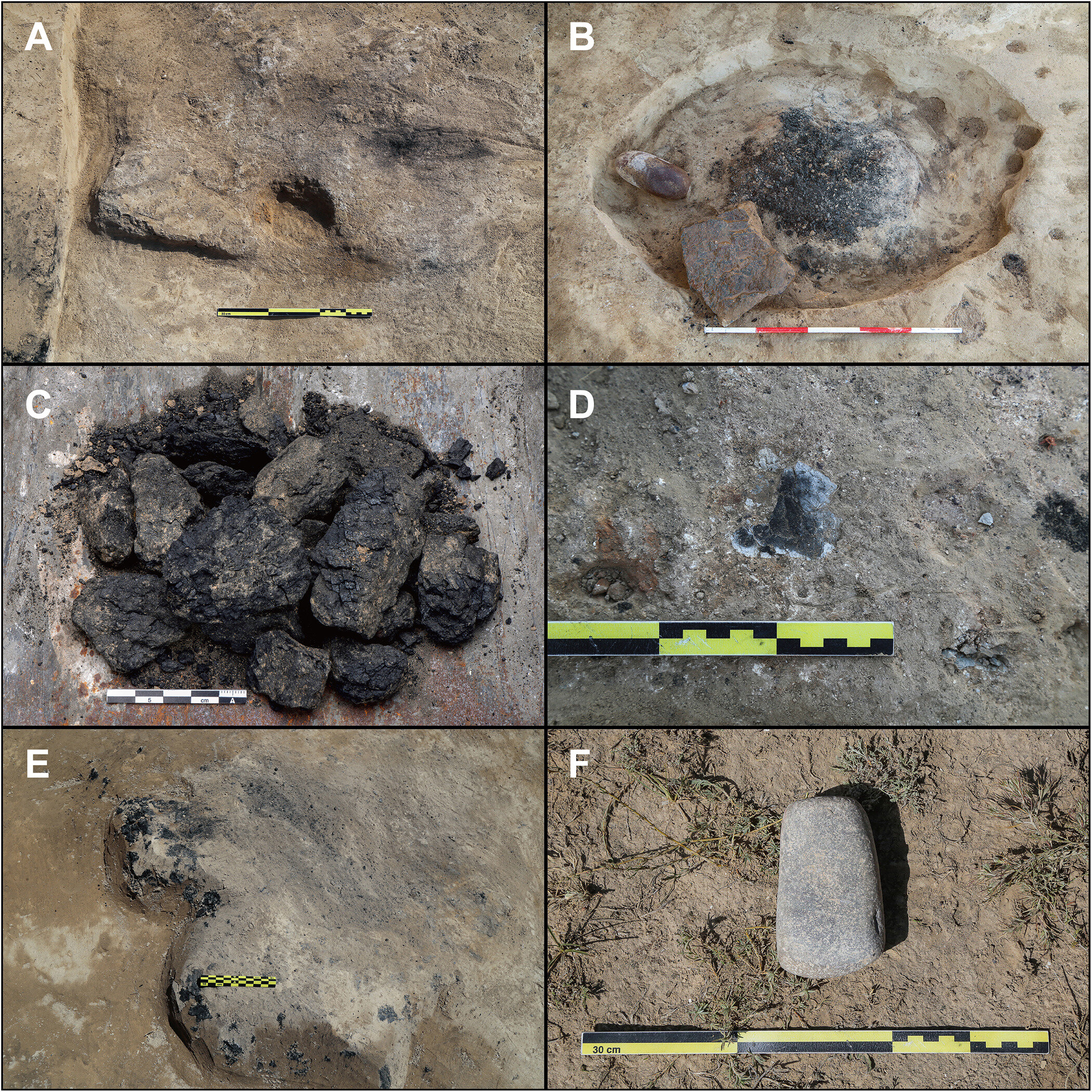Typical archaeological remains related to coal exploitation at JRTGK. (A) Coal ash unearthed from the floor of house site F1. (B) Coal pile unearthed from pit H112 in house site F25. (C) Coal lumps unearthed from house site F3. (D) Coal fragments incompletely burnt in stratum T2L3a. (E) Coal storage location near a furnace. (F) Stone artifact unearthed near a coal pile that was highly likely used for the coal fuel process.Credit: Science Advances (2023)

1 posted on
08/11/2023 1:34:33 PM PDT by
SunkenCiv
To: SunkenCiv
Those people would have been canceled like you wouldn’t believe. Lucky for them they lived before Twitter and the View panel.
4 posted on
08/11/2023 1:45:55 PM PDT by
frank ballenger
(You have summoned up a thundercloud. You're gonna hear from me. Anthem by Leonard Cohen)
To: SunkenCiv
For Everyone:
These remains are in China. Sheesh! Why did I have to post this info?
To: SunkenCiv
It is also much easier to melt copper and tin in a coal, rather than a wood fire. A coal fire can burn up to 3500°F, whereas a wood fire can’t get much hotter than 1000°F.
To: SunkenCiv
Bastids gave us climate change!
8 posted on
08/11/2023 2:23:35 PM PDT by
bigbob
(Q)
To: SunkenCiv
“...coal has been known to combust naturally
when exposed to the sun on a hot day...”
-
First time I have ever heard of that.
9 posted on
08/11/2023 2:54:05 PM PDT by
Repeal The 17th
(Get out of the matrix and get a real life.)
To: SunkenCiv
The brandon age doesn’t even have coal.
12 posted on
08/11/2023 3:03:49 PM PDT by
Leep
(What skill or service did the biden family have that netted them tens of millions of dollars?)
To: SunkenCiv
***coal has been known to combust naturally when exposed to the sun on a hot day.***
Absolutely true! In the coal fired power plants we had to keep a constant eye on the coal pile for “hot spots”. Often one of these small fires would work it’s way into a coal pulverizer and blow it up. What a mess! And deadly to anyone walking by.
15 posted on
08/11/2023 3:21:33 PM PDT by
Ruy Dias de Bivar
(“No man’s life, liberty, or property are safe while the legislature is in session.”)
To: SunkenCiv
Proof right there that they started climate change.
FreeRepublic.com is powered by software copyright 2000-2008 John Robinson
